While trying to decide whether to use f/2.8 or f/3.3 on the Samyang 135/2.0, I did some quick test earlier with the Sigma 40/1.4.
Well, there is definitely no way to do an aperture mask without incurring aperture vignetting (and the two notches on a bright, focused star).
When I defocus the Sigma to get away from the diffraction zone, and therefore looking like geometric optics, so the image plane shows a magnified copy of the aperture. (When you focus and get into the diffraction zone, the equations looks like a Fourier kernel, and therefore the image looks like the Fourier Transform of the aperture.)
OK, this is what I see about halfway out to the APS-C corner:
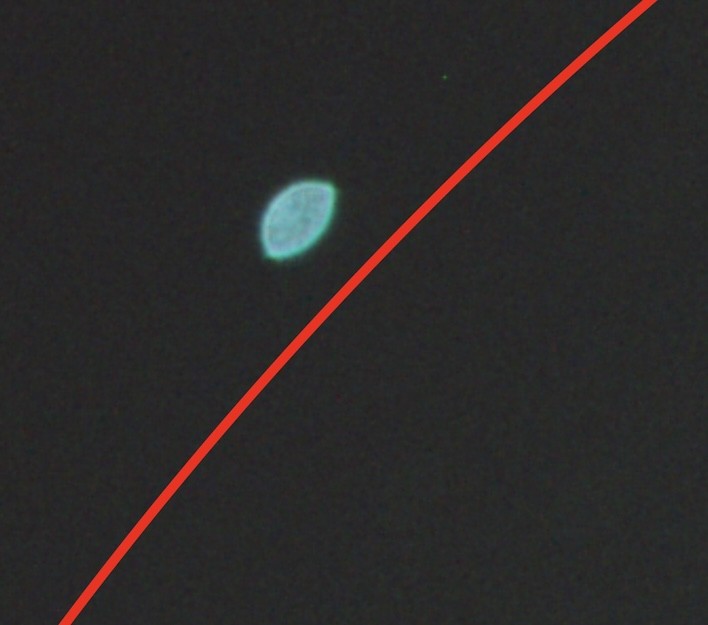
When focused, I get pretty horrible notches (1/2 of an iron cross). You can see half of the circumference comes from the lens, and the other half from the aperture mask.
So, front aperture masks for the Sigma 40 is out of the question. I have yet to try a rear aperture mask. And until today (FedEx delivery was 8pm, so it will do no good tonight), I could not control a Nikon's aperture since the Sigma 40 does not have a manual aperture ring.
Although too late for tonight, what I did was not to get a Nikon camera, but a Nikon to Sony A7 adapter (one that has full electronics control https://www.amazon.com/dp/B0BPP1MRJB). It is good to have even not for just for the Sigma 40, but allows me to use Nikon leses on my Sony mirrorless cameras.
However... there is no DoF preview button on a couple of the Sonys that I have. When you change aperture, the lens stay wide open until you take the exposure So what to do? The usual trick is to electronically chage the aperture and pull the lens out while it is powered on. But I cannot change the aperture. I finally racked the old brains enough and did this: set the aperture under manual mode (the aperture does not change of course), and then set the shutter to 10 seconds. Click to take an exposure, and I have 10 seconds to pull the lens out. Works like a charm -- I now have a Sigma 40 set to f/16 :-). And no Nikon camera in sight :-).
We'll see how ugly are the spikes at f/3 or so later, but I will have to just cut the cables in the lens if I want to do any surgery to it. By the way, remember I had to get the Nikon mount because there is no Canon mount left on this earth Someone at eBay wanted over $700 for a used Sigma 40 with a Canon mount :-). Thinking about it now, a Canon mount would not actually help me since I would need to set the aperture too, albeit I have some some Canon 5D bodies around still. And the Canon mount will come with cables inside the lens too.
I think I will eventually bite the bullet and cut the cable (even if it were a Canon mount). I'll cross that Rubicon eventually :-). Fir now, I rather not think about the complexity :-).
In the meantime, the machine shop delivered an aperture mask for the Samyang iris. This is what the back looks looks like, a plain hole that is 21mm in diameter:
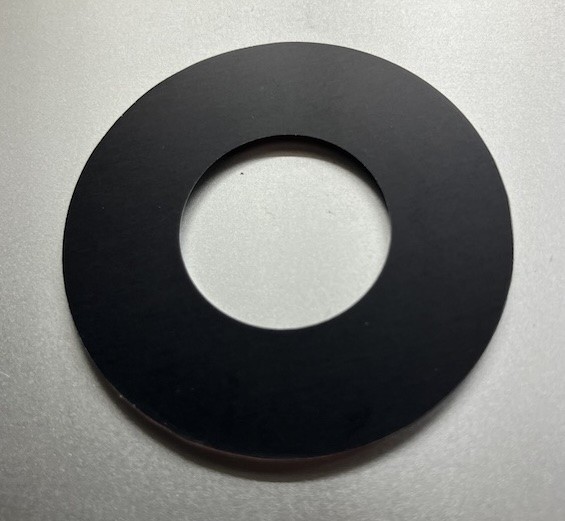
When fully opened to f/2, the Samyang's iris is 29.6 mm in diameter, so this hole (intentionally) represents sqrt(2) smaller, or an f number of f/2.8.
OK, the flip side of this fixed iris looks like this:
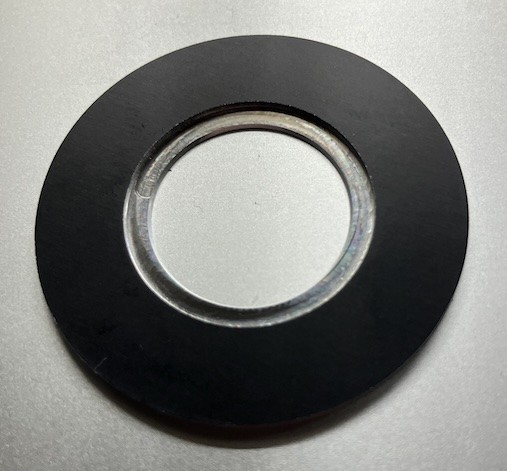
The hole is not a simple hole, but is bevelled so that the edge of the hole is only 0.2mm thick. Part of this build is to test how clean the machine shop can produce aperture masks. It looks usable without adding retaining rings, etc.
Included in this design is a blind hole that is 25.96 mm in diameter and 1mm deep (the material is 2mm thick). That allows me to canibalise a ZWO 170º wide angle lens for its aperture retaining ring/mask. The ZWO lenses are worse than Coke bottle bottoms, and I would eventually throw them in the trash anyway. At least I could use one part of it (just not the glass/plastic -- I don't think ZWO has ever heard of flourite or even FPL-53 :-)
This shows the fisheye retaining ring placed inside the blind hole..
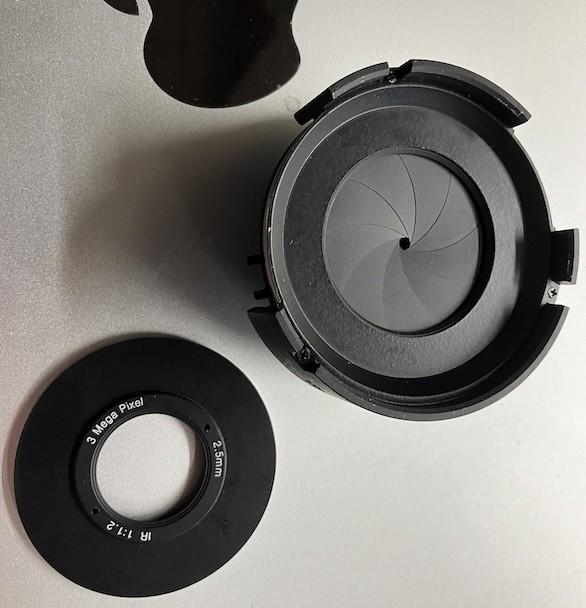
The clear aperture of the retaining ring is about 18mm, so as an iris, would make the Samyang come in at 2*29.6/18, or an f/3.3.
So, I can leave out the retaining ring and get f/2.8, or include the retaining ring to get f/3.3 with this build. Finally, this is what it looks like if everything were glued together:
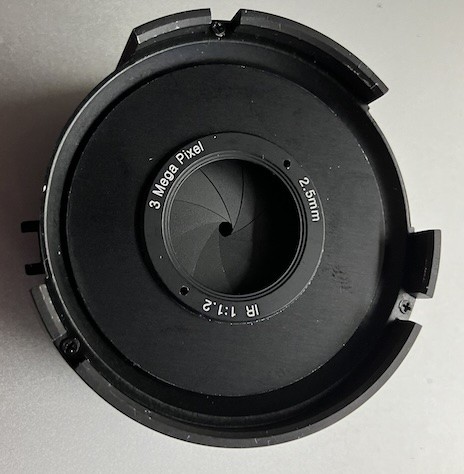
The original iris will need to be opened to larger than my fixed iris, or, I can still use the lens with the smaller iris to get better stars, but with spikes.
Chen